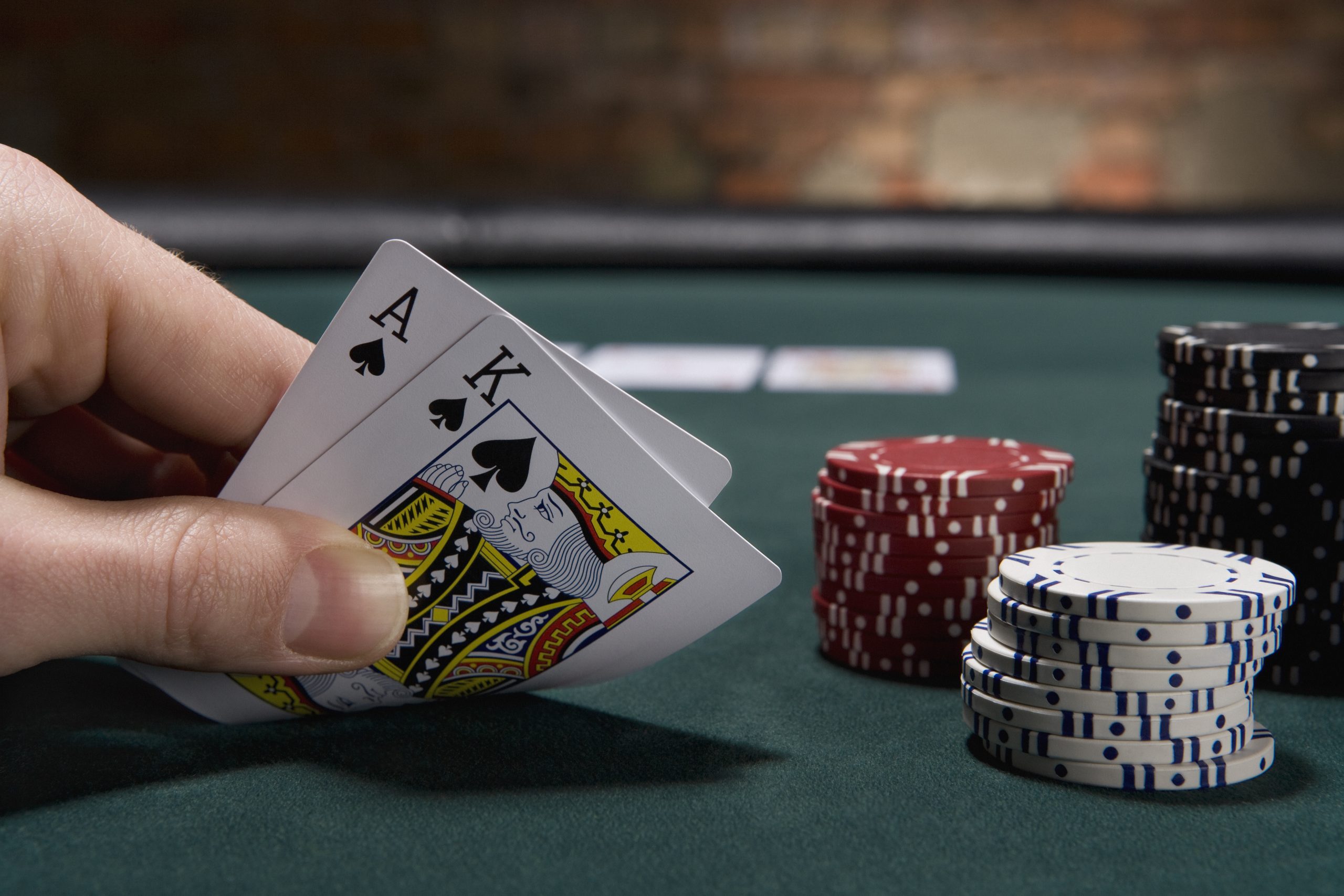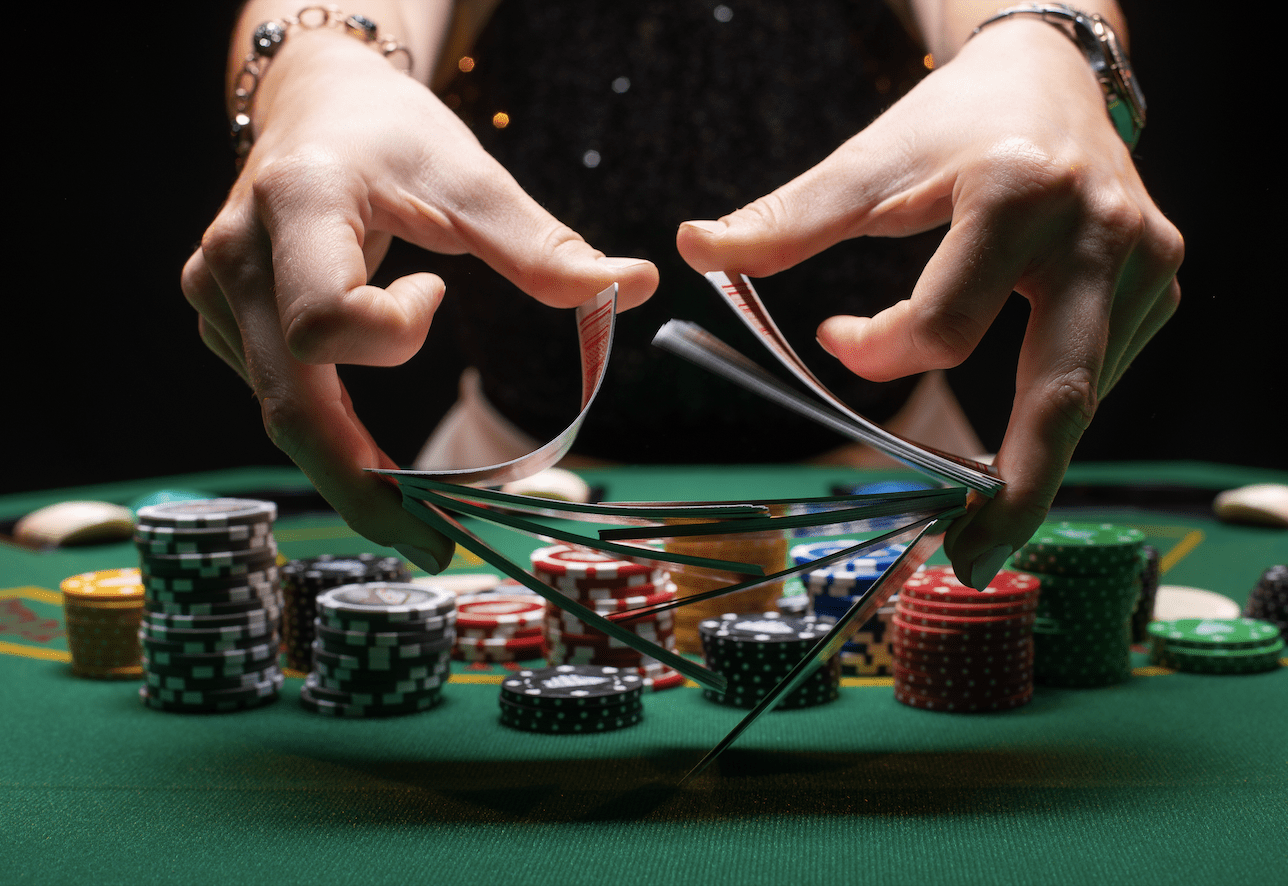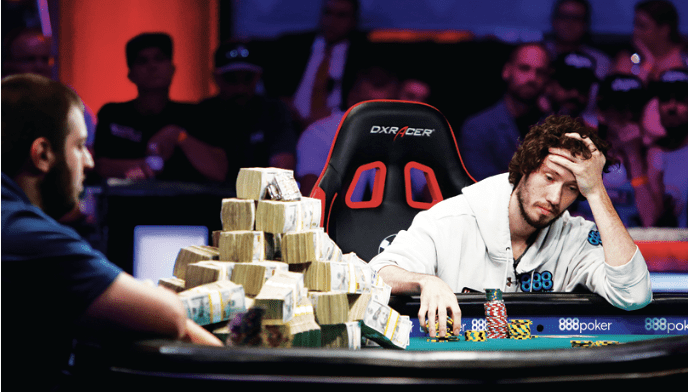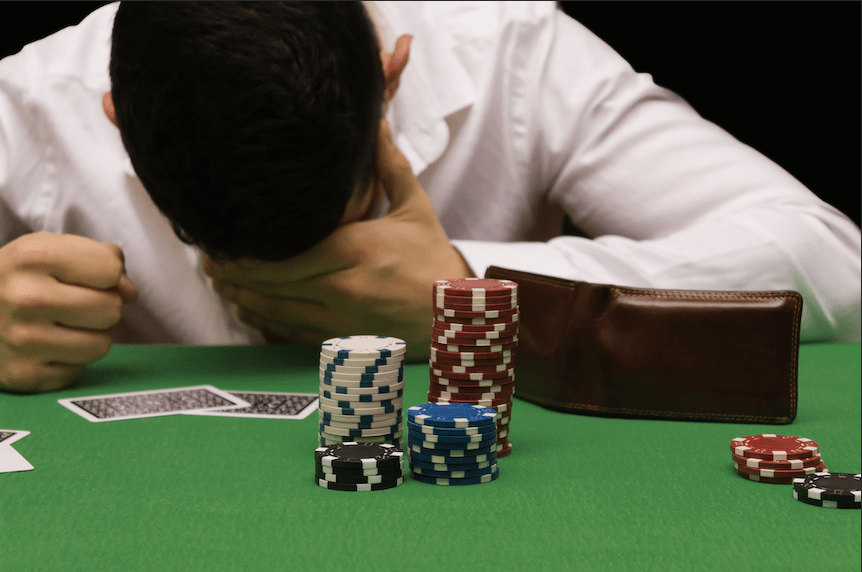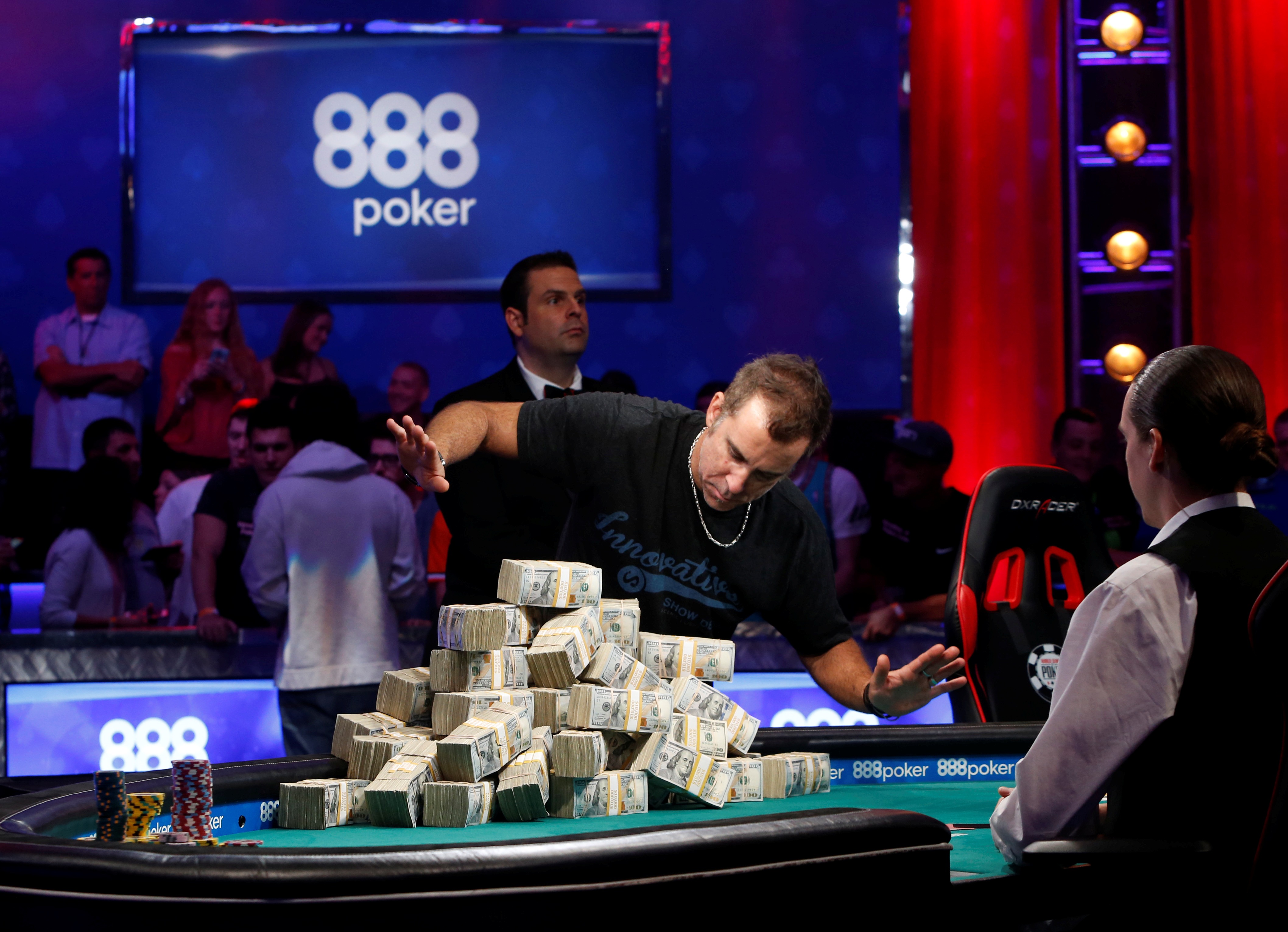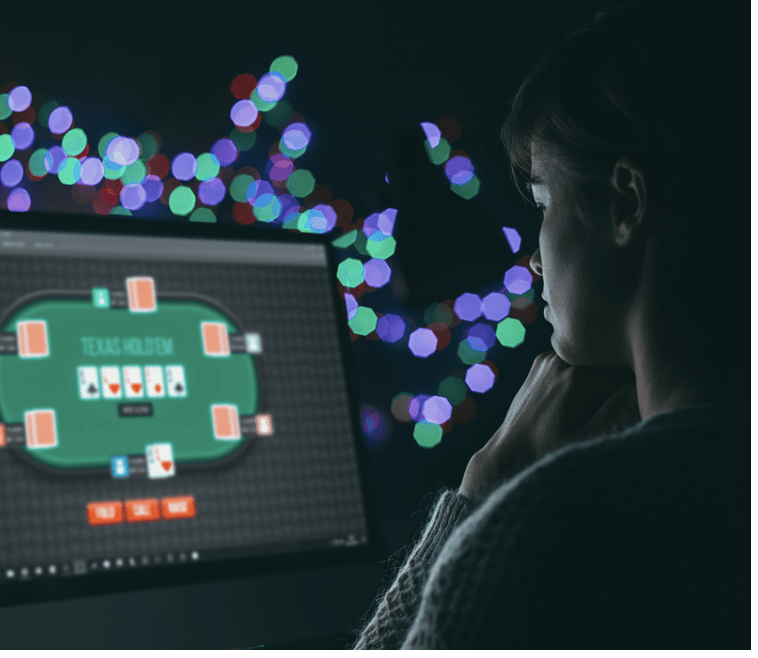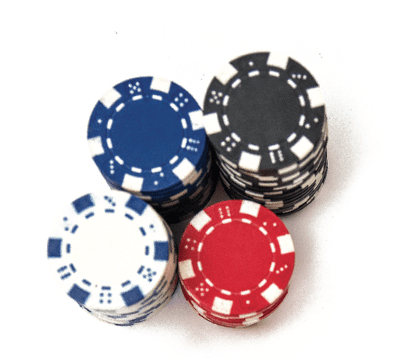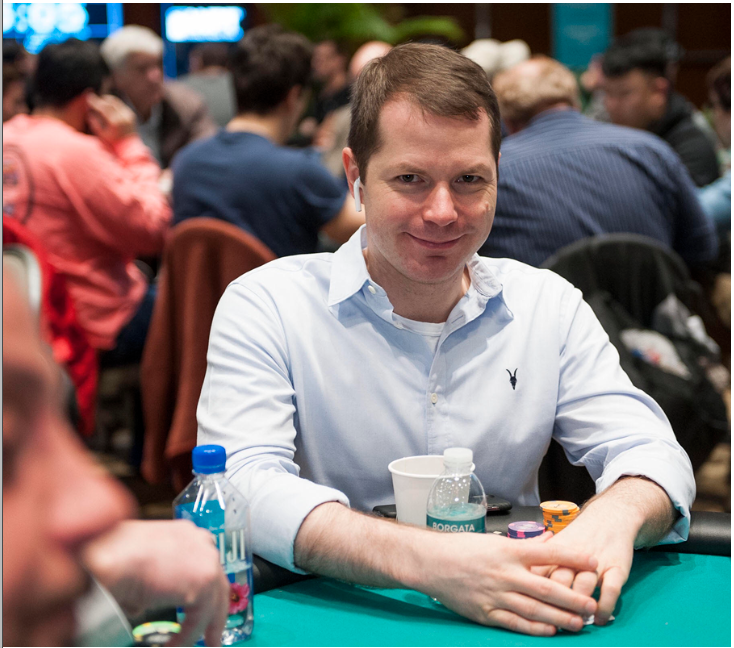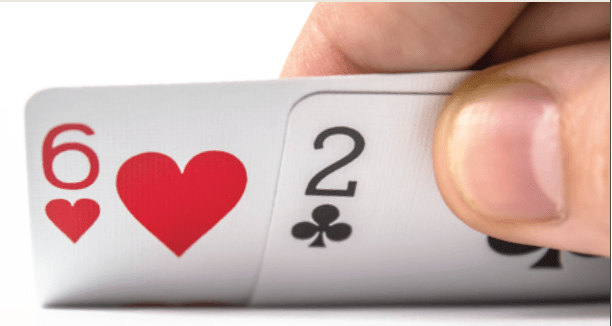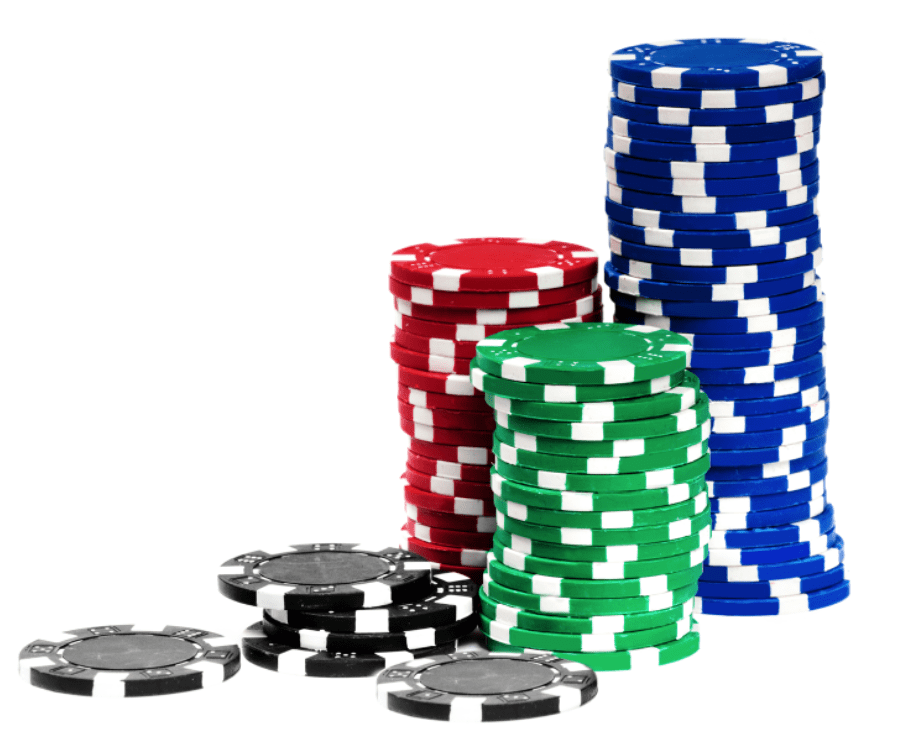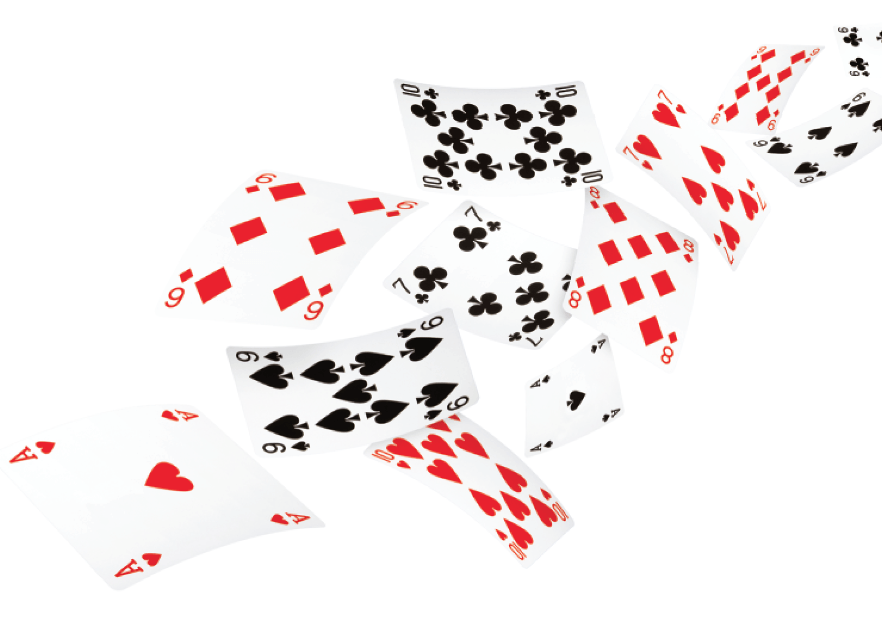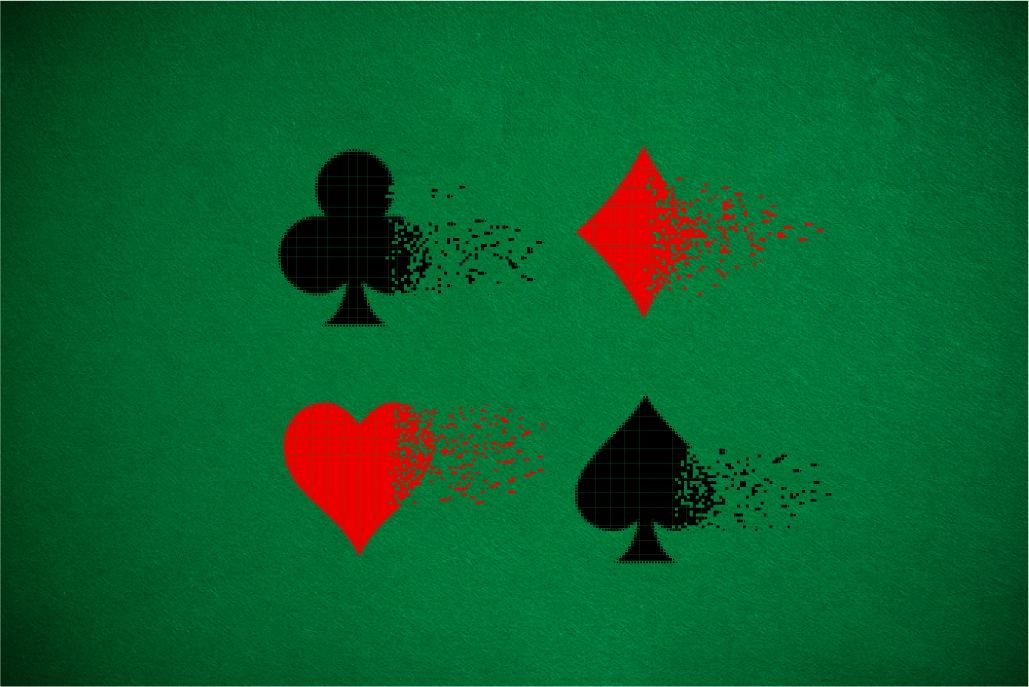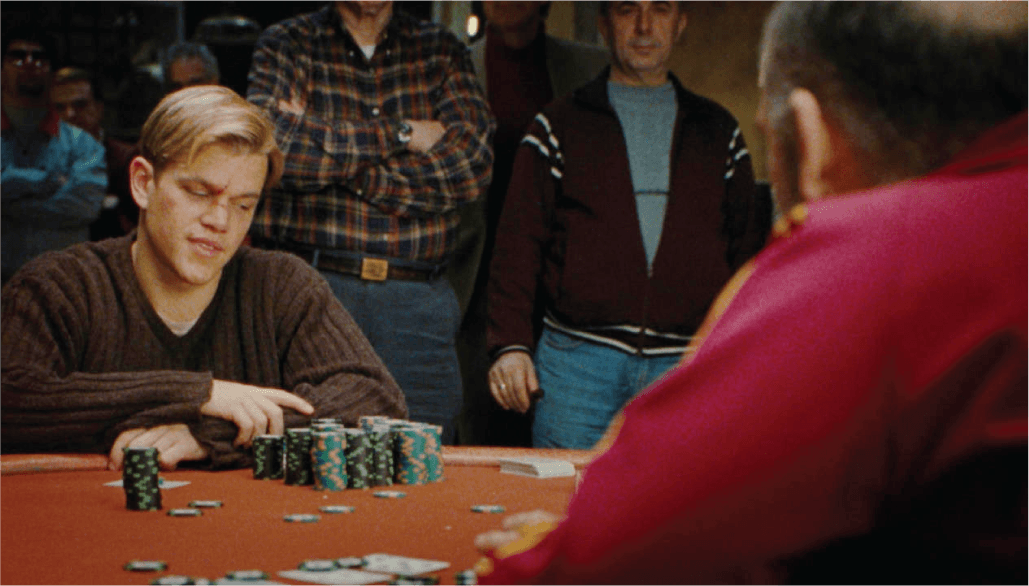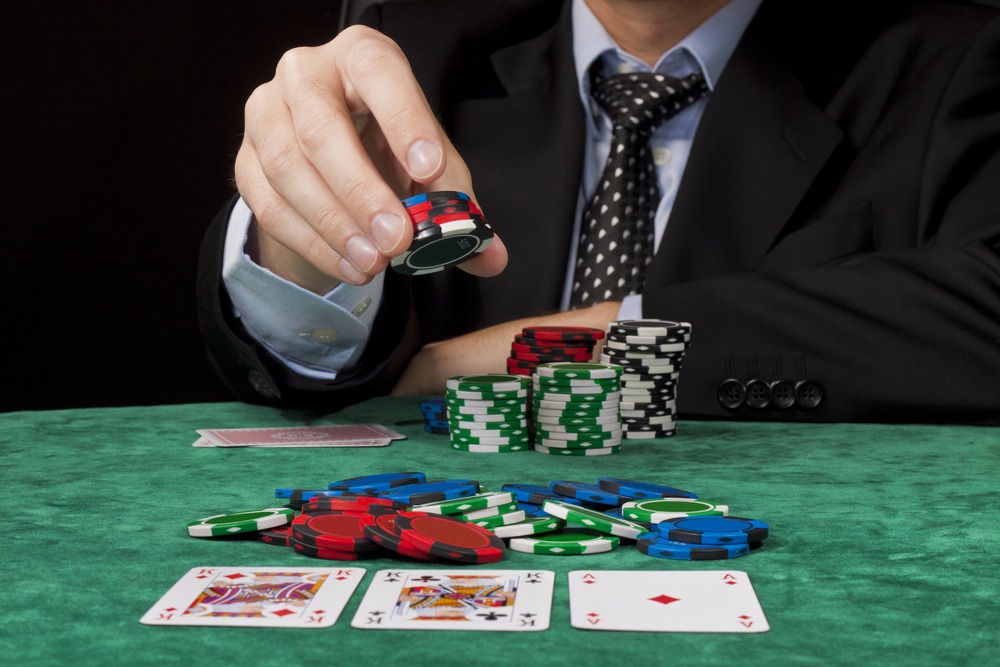Playing Poker like a Robot
AI bets on a mixture of strong hands and weak hands and does the same when it checks. Poker star Jonathan Little says the best players try to replicate that approach.
All games get tougher over time, and poker is no different. Back in the old days, all you had to do to win was play decent starting hands, bluff people when they had marginal hands, fold when it was clear they liked their hands, and make good reads. Today in the toughest games in the world, players operate as much like robots as possible and then adjust to whatever their opponents do incorrectly.
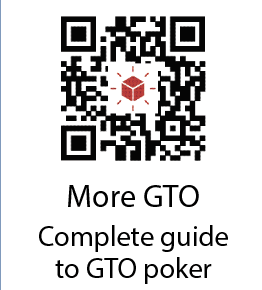
When working to develop robust poker strategies that are difficult to beat, realize that when you bet, you should have a mixture of strong hands and weak hands, and when you check, you should also have a mixture of strong hands and weak hands. By playing strong and weak portions of your range in the same way, you force your opponent to play a guessing game, and if you structure your ranges intelligently, you will be difficult, if not impossible, to beat. This is what the best AI programs and GTO (game theory optimal) solvers aim to do, and it is what the best poker players in the world try to replicate.
For example, suppose when playing 40 big blinds deep you raise to 2bbs from the lojack (first to act at a 6-handed table) with this range:
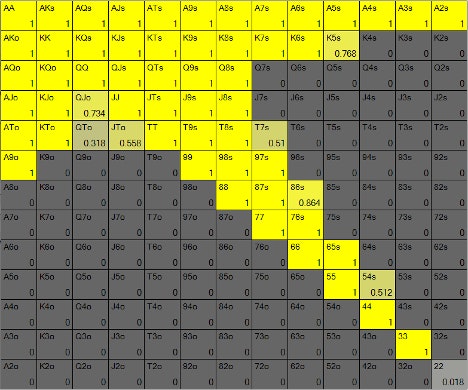
This implies that you raise to 2bbs with all of the hands in yellow, with the hands that are raised less than 100% (1) of the time raising only some portion of the time. Q-Jo is raised 73.4% of the time, meaning it folds the other 26.6% of the time. Most players have a difficult time memorizing the GTO preflop strategy for each position and each stack depth, and they have an especially difficult time knowing when specifically to raise with hands like Q-Jo that should not be raised every time. Some players use randomization methods to determine when to raise with hands that are not raised every time, such as looking at the second hand on a watch, and when it is between 9 and 12, they do not raise (because that represents 25% of the entire face of a clock). Other players simplify their preflop strategy a bit to perhaps raise with Q-Jo every time but Q-10o none, which is slightly off from the GTO strategy but much easier to implement in the real world.
Most of the best players strive to play as close to GTO as possible while also realizing that it is impossible to memorize and implement the GTO strategy even in this common situation. They work hard to develop implementable strategies that are close to the GTO strategy while losing almost no equity compared to the GTO strategy.
Suppose only the big blind calls. The flop comes As-7h-6d and the big blind checks. This is a flop that heavily favors the initial raiser, allowing them to bet close to every time. It may seem like that strategy would be easy to implement, but you have to figure out which size to use and when to use it. Here is how the GTO solver would play this situation:
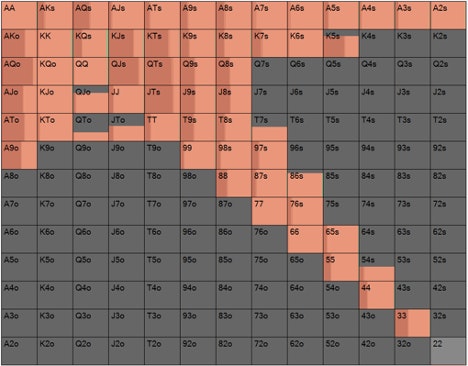
The hands in dark red bet the size of the pot, the hands in light red bet 25% of the pot, the hands in green (not many of them!) check, and the hands in gray are not in the range because they would have folded preflop.
Again, this strategy is incredibly difficult for humans to implement accurately. It is difficult to know to bet A-Ko and A-Jo using a pot-sized bet roughly 67% of the time while A-Qo bets using a pot-sized bet most of the time. It is also difficult to know how much more often to bet a hand like 3-3 using a large size compared to a similar hand like 5-5.
Here are some broad, overly simplified rules to help you determine which size to use when you are in position and checked to on a flop that heavily favors your range (as in this situation where your range has roughly 68% equity compared to the big blind’s 32% equity).
When you have an extremely strong hand that is unlikely to get outdrawn (A-A, 6-6, A-7), you should usually bet using a small size.
When you have a hand that is almost always best but is vulnerable to being outdrawn (A-Q, A-10), you should usually bet using a large size.
When you have a hand that could be good but could also be behind (A-2s, K-K, 8-7s), you should usually bet using a small size.
When you have a draw that will continue if raised (9-8s, 5-4s), you should usually bet using a small size when playing 40bbs deep. You can bet larger as the stacks get deeper because you can continue against larger raise sizes as stacks get deeper due to your increased implied odds.
When you have a draw that will fold if raised (Q-Js, J-10s), you should usually bet using a large size.
After you use a specific bet size on the flop, all hands that are not using that size are no longer in your range. Suppose you bet 25% of the size of the pot and the big blind calls. The turn is the (As-7h-6d)-5c and the big blind checks.
This turn is extremely bad for your range (and therefore extremely good for the big blind’s range) because the big blind will have improved to many two pair and better hands. Also, the big blind would have folded all their weak hands to your small flop bet whereas you still have all the weak hands in your range because you bet with everything on the flop, with much of your junk using a small size. So, the big blind will usually have something decently strong and you have a lot of junk in your range. This will force you to check a large amount of the time with your polarized betting range (best hands and draws) usually using a large size:
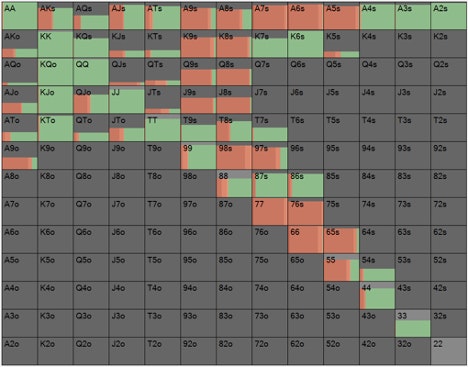
Notice that when you bet using the size of the pot, you usually have either a strong made hand that is happy to get money in the pot (top pair with a good kicker, or better) or a draw (usually with a 9 or 8). When your range is not heavily favored over your opponent’s range, you are forced to check a large portion of the time and when you bet, it will usually be with your best hands and draws.
Take note that A-A slowplays by checking, whereas all other premium hands bet. This is because when you have two Aces in your hand, it becomes substantially more difficult for your opponent to have a strong hand that they will continue with if you bet because there is only one Ace remaining in the deck. Checking behind with some of your premium hands also protects your turn checking range so it does not have to fold too often if your opponent bets the river.
Suppose you bet the turn and the big blind calls. The river is the (As-7h-6d-5c)-4s and the big blind checks. Even though all your straight draws with an 8 improved to a straight, many of your best hands on the turn have been substantially downgraded because it is quite easy for the big blind to have an 8 or two pair that will not fold to a river bet. This will result in your river strategy to be to go all-in for a bit more than the size of the pot with your straights as well as some of your hands that cannot win at the showdown if you check behind:

Realize that you cannot bluff with all your hands that obviously lose at the showdown because if you did that, you would be bluffing too often. When determining how often you can bluff on the river in a situation where your range is polarized (effective nuts or nothing), you have to figure out the pot odds your opponent will be getting and then structure your range such that your opponent is indifferent to calling. In this situation, your opponent has to call 27.4bbs to win a total pot of 81.5bbs (the pot going to the river plus your bet and their call). This means they need to have the best hand 33.6% of the time to justify calling. You should structure your betting range such that it contains roughly 33.6% bluffs (assuming your value bets win every time when called, which may or may not be the case).
The chart below shows which hands go all-in and how often:
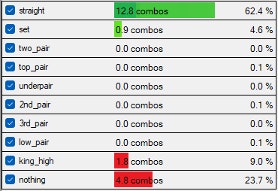
Notice that your all-in value range contains 13.7 combinations of hands and your bluffing range contains 6.6 combinations of hands. 6.6/(13.7 + 6.6) = 32.5%, meaning when your opponent calls with their bluff catchers (which will be almost all of their range), they will win 32.5% of the time, which is quite close to the pot odds they are being offered, making them indifferent. If your entire river betting range would win every time when called, you would bet with closer to 33.6% bluffs, but in this spot, you should value bet with some sets (three of a kind) that will occasionally lose when they happen to be against a straight but are strong enough to value bet and extract value from your opponent’s two pair.
When the GTO strategy takes a line where it bets the flop, turn and river, it pretty much always bluffs using a large size with a polarized range with the bluffs making up the percentage of your range that will make your opponent indifferent to calling based on the pot odds.
If instead, the river was the (As-7h-6d-5c)-Ks, you would get to bet more often, but even then, some of your bluffs will be forced to give up.

On this “safe” river, you can value bet as thinly as top pair. However, you cannot bluff all-in at the full 33.6% frequency because when you go all-in and get called, some of your value hands lose (when your opponent either slowplayed a hand better than top pair or when they improved to two pair on the river). 9.3/31 = 30%. This means 30% of your all-in range on the river are bluffs compared to 32.5% on the (As-7h-6d-5c)-4s board where your river value range (almost entirely straights) was almost always good. As there are more hands in your opponent’s range that beat your value betting range, you are forced to bluff a little less often.
It should be clear by now, but even on this simple flop where you were able to profitably continuation bet with your entire range, as the hand played out, humans will have an impossible time playing anywhere near the GTO strategy. The best players in the world can come close to playing this strategy, not because they have memorized this specific spot, but because they have learned roughly what the GTO solver does in all common situations by spending countless hours studying the solver’s outputs and figuring out why it does what it does. I have done much of the hard work for you in developing my in-depth Tournament and Cash Game masterclasses at PokerCoaching.com that will give you implementable rules to help you play most common situations well.
The entire strategy outlined above is actually a “simplified” GTO strategy where only five bet sizes were available to choose from. In no-limit hold’em, you can bet any amount, which the AI programs often do. They pair a value bet and a bluff at the correct frequency to each specific bet size, making them impossible for us mere humans to beat.

All of this said, live poker cash games and tournaments are still highly profitable in 2023. Even though the best players are always getting better and learning to play closer and closer to GTO, the real money in poker is made when you get out of line in order to massively exploit the mistakes your opponents make. For example, if you know your opponent goes all-in in the two above river situations with all their bluffs instead of only some of them, your simple adjustment is to call with all your bluff catchers. If they rarely or never bluff all-in on the river, you can fold all your bluff catchers. If you diligently pay attention to the strategies each specific opponent uses that are far from the GTO strategy, you can make logical adjustments away from the GTO strategy that will allow you to maximally exploit them and win a ton of money.
Jonathan Little, a professional poker player and WPT Player of the Year, has amassed more than $7 million in live tournament winnings, written 14 best-selling books and teaches at PokerCoaching.com. @jonathanlittle

